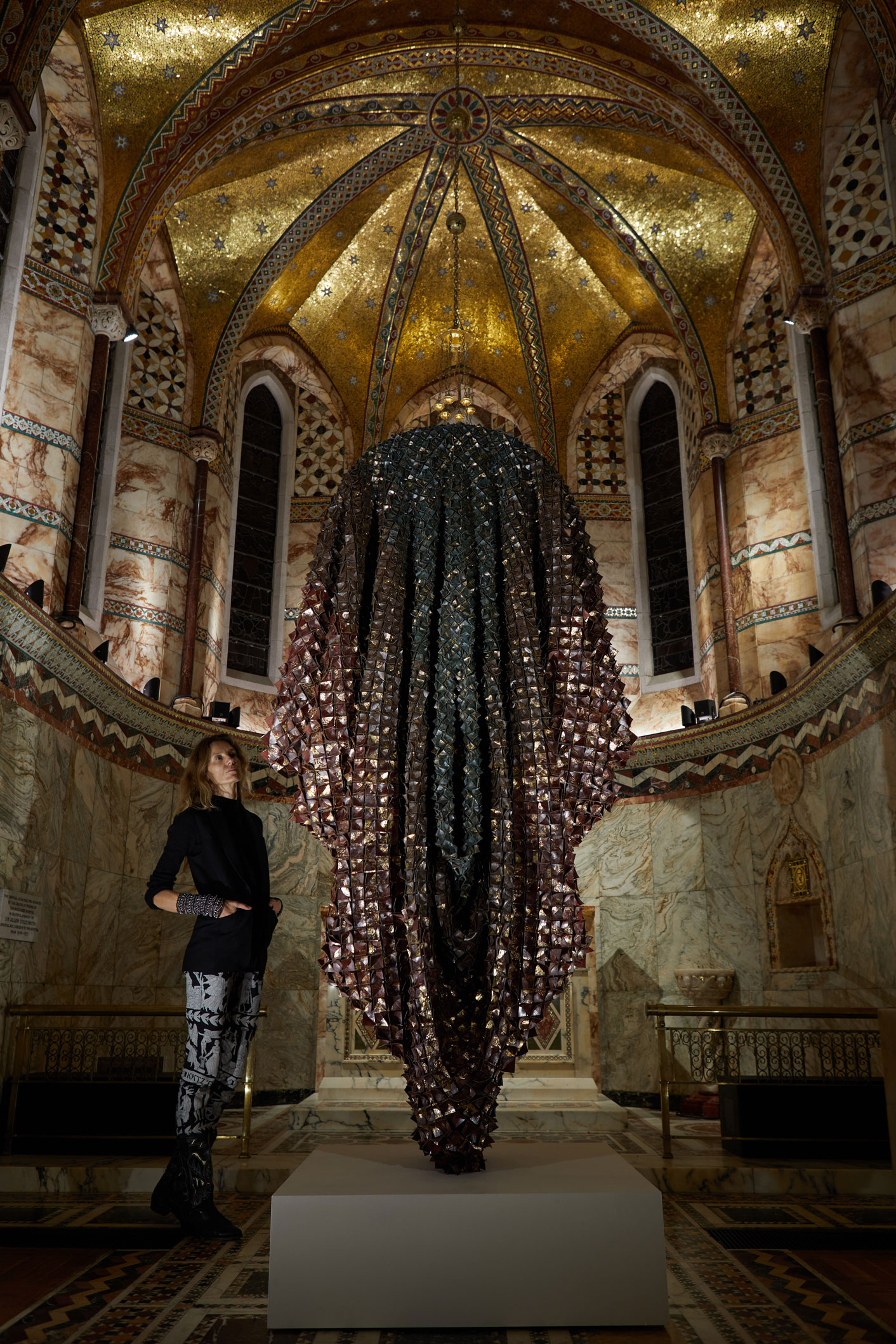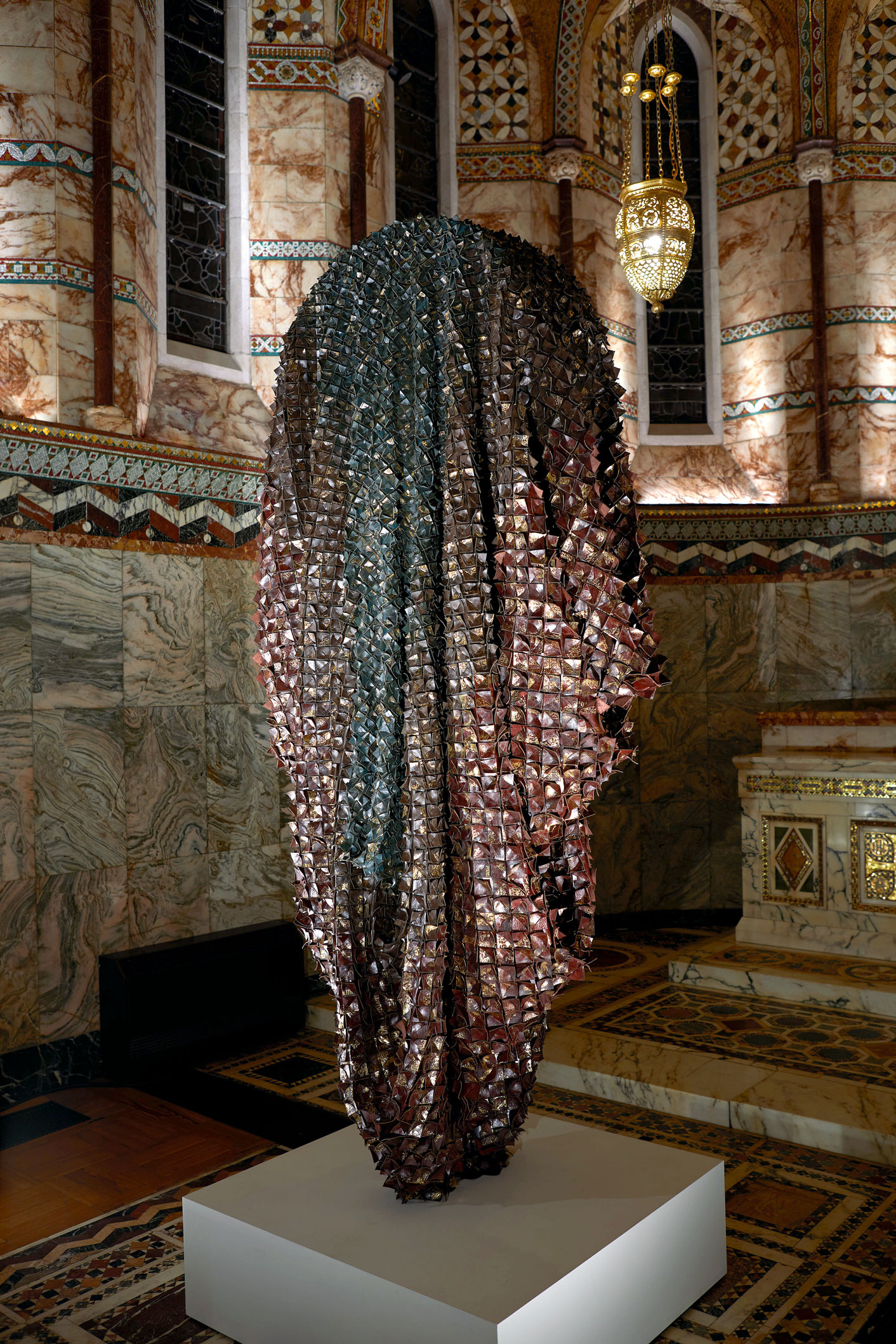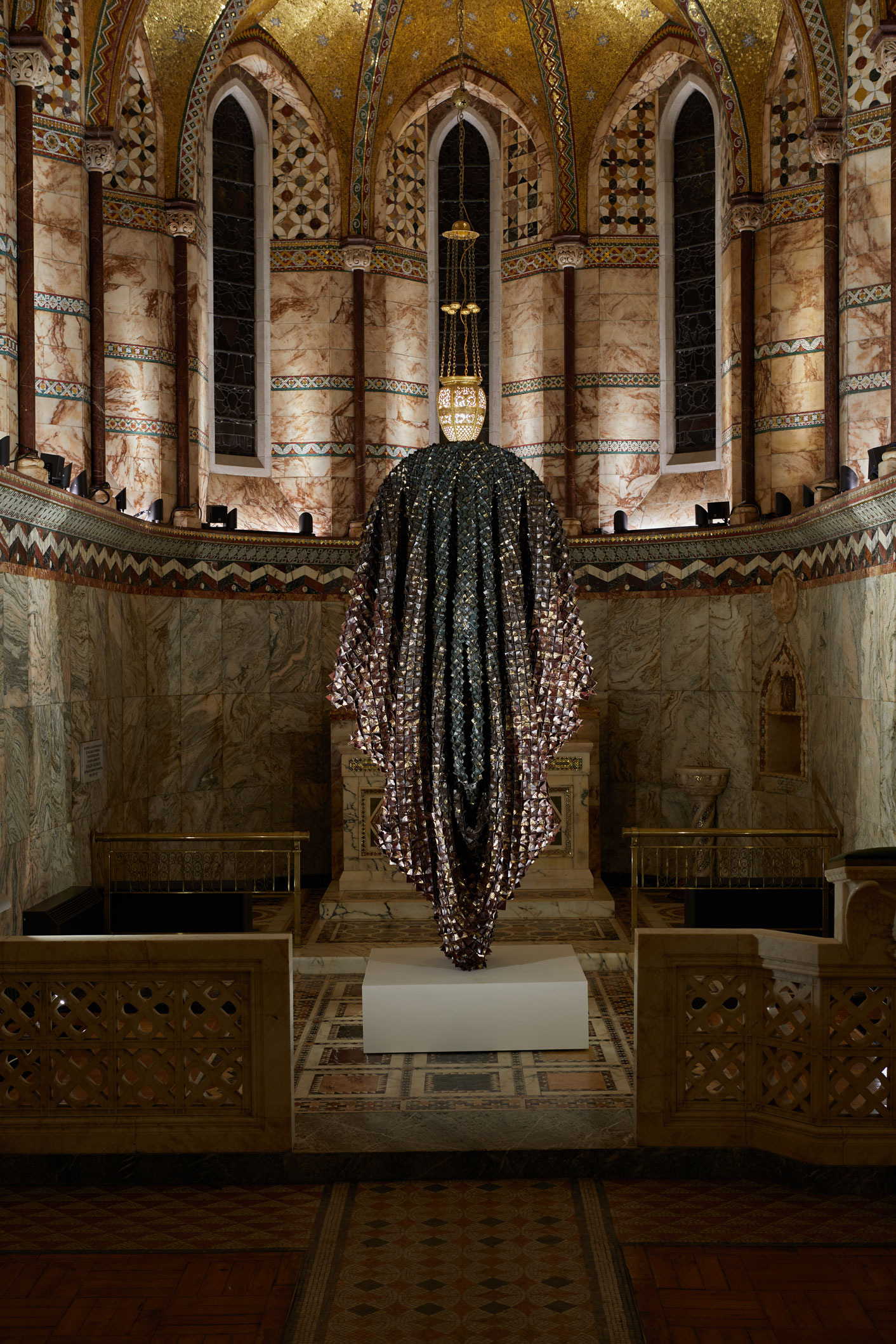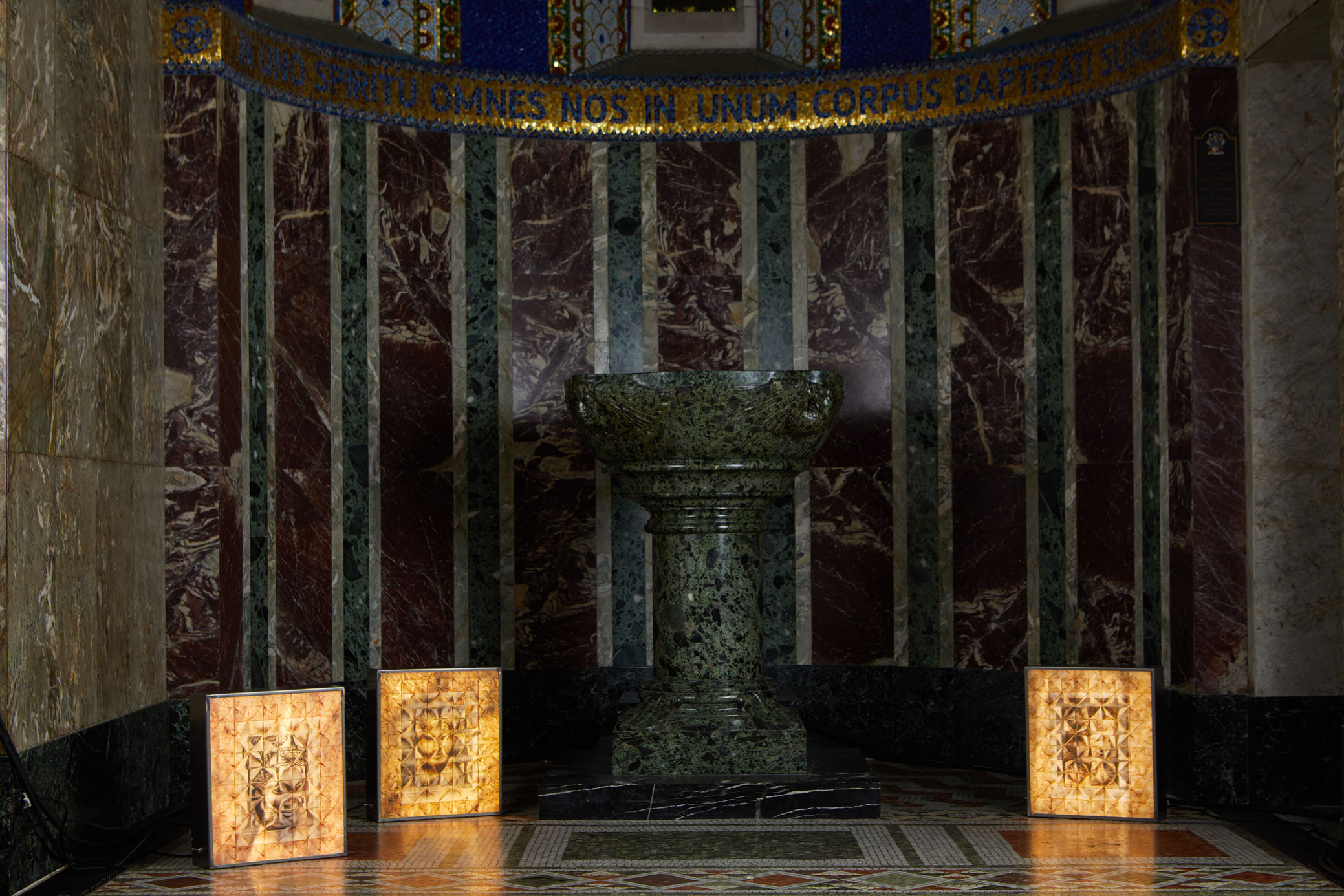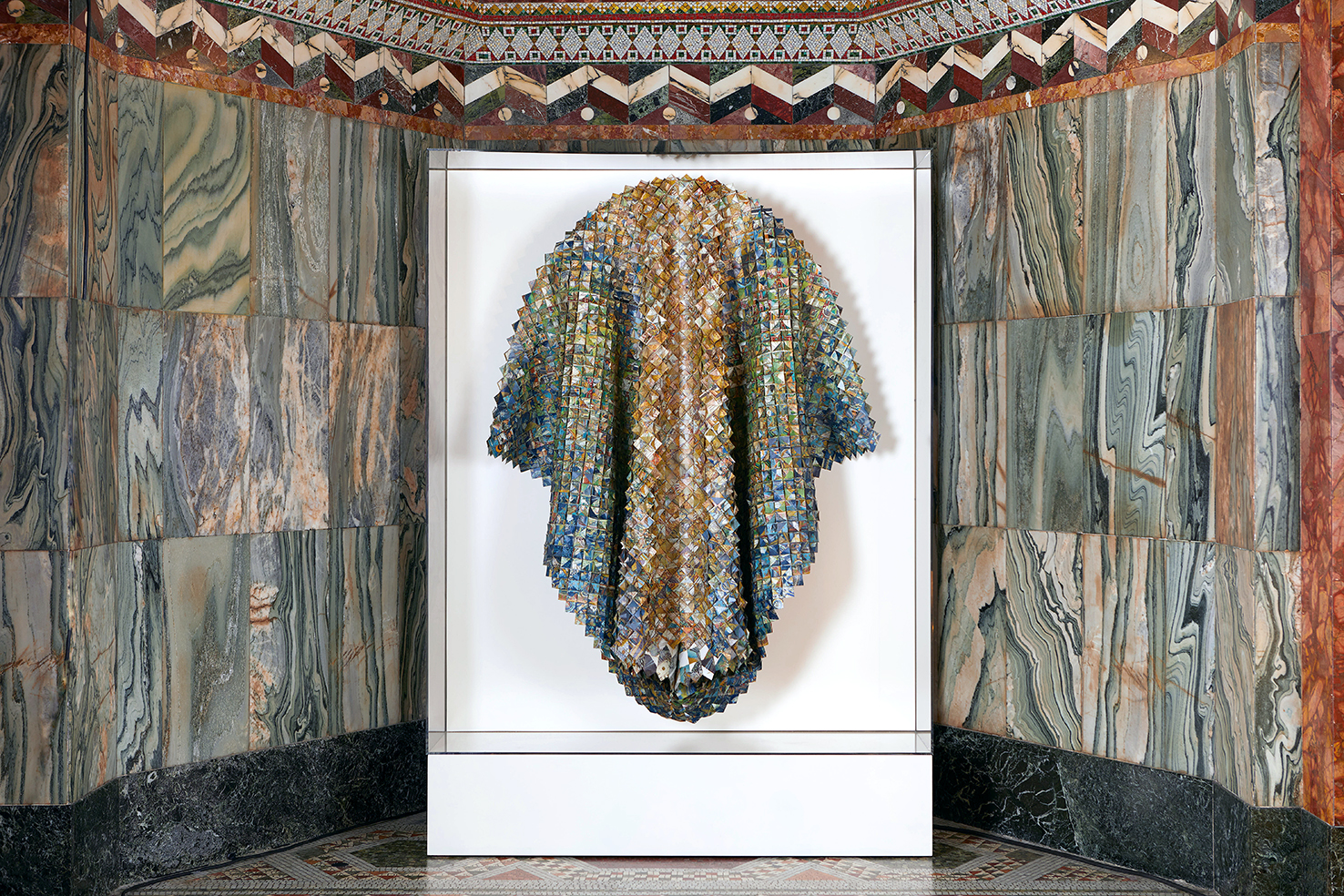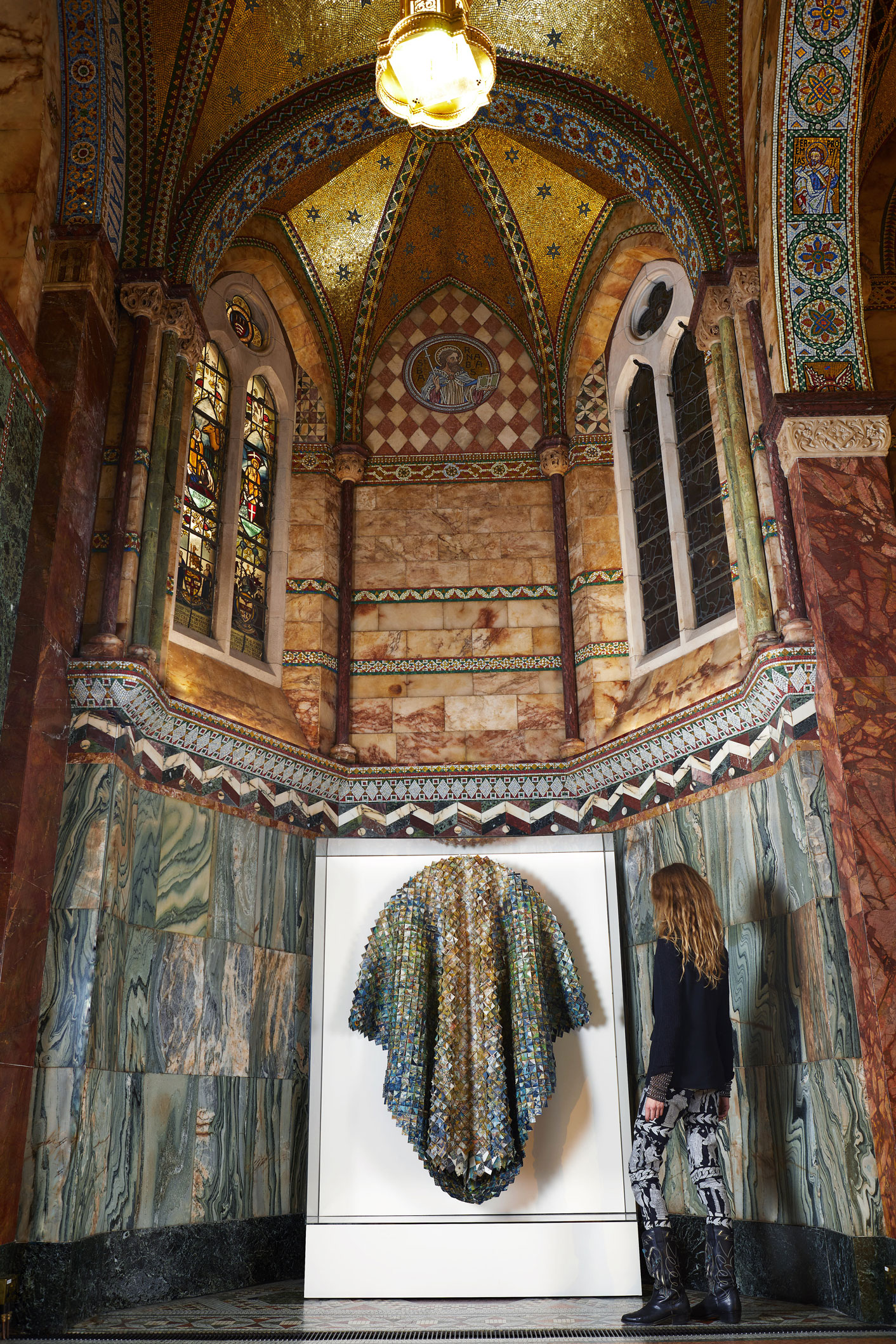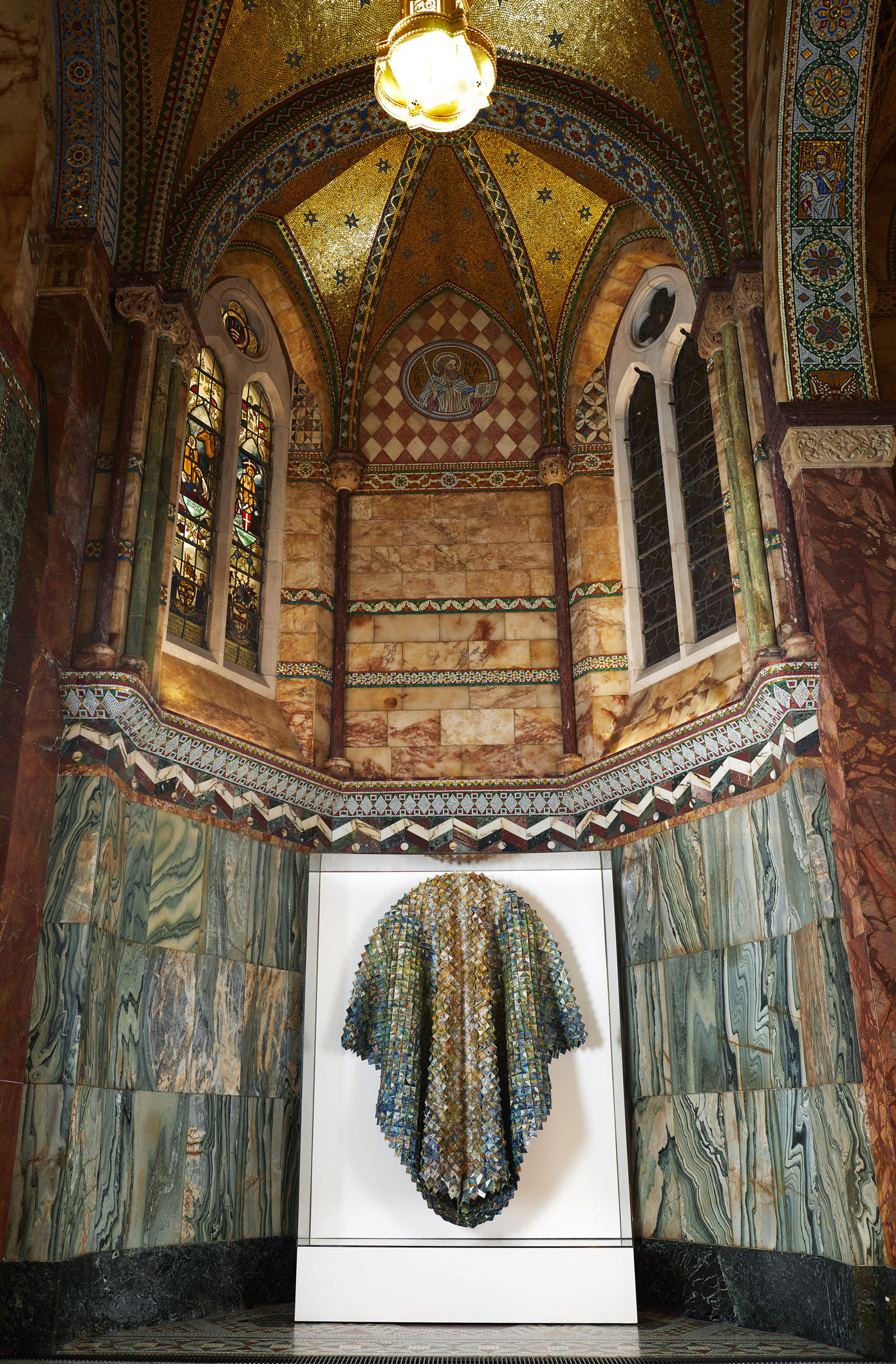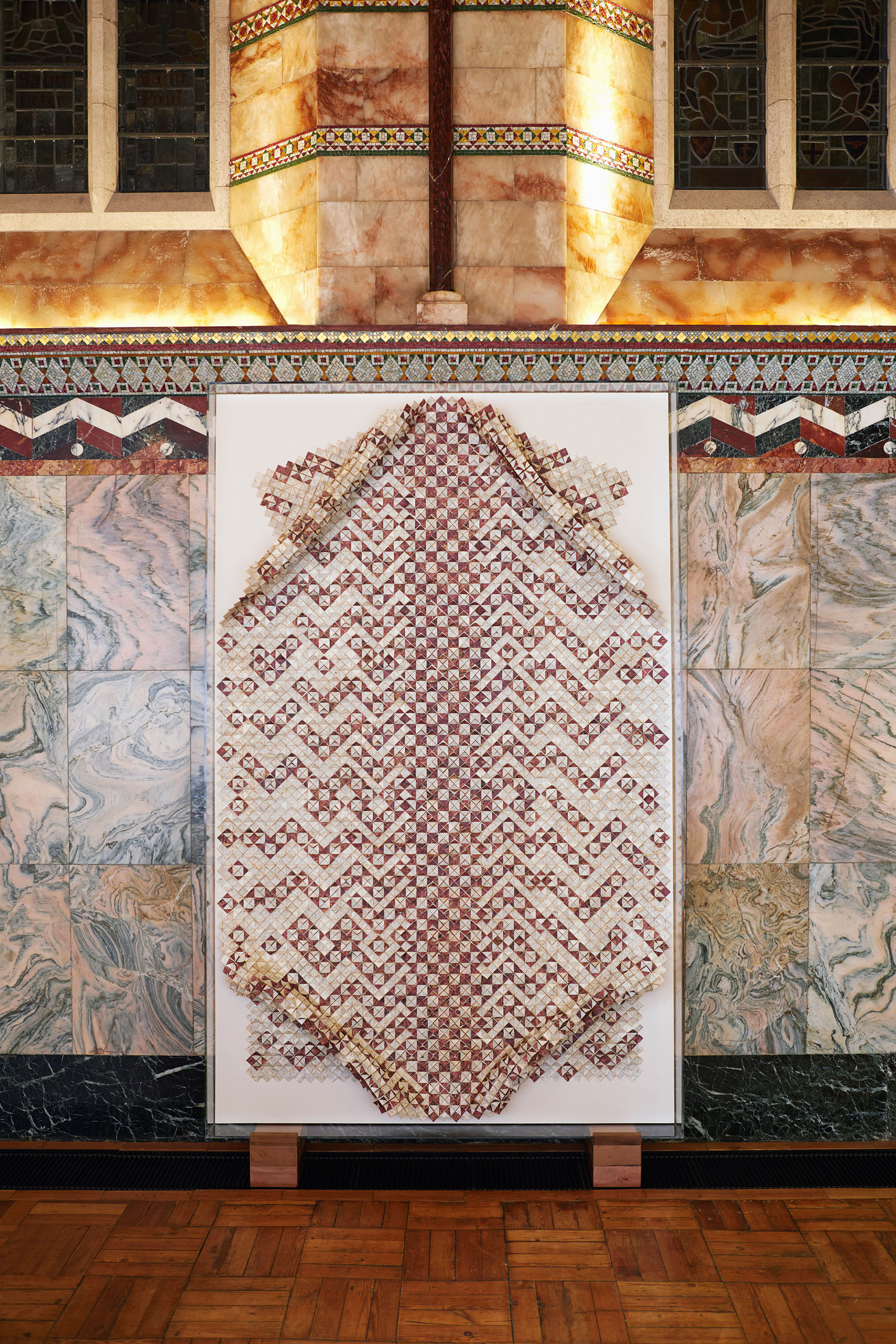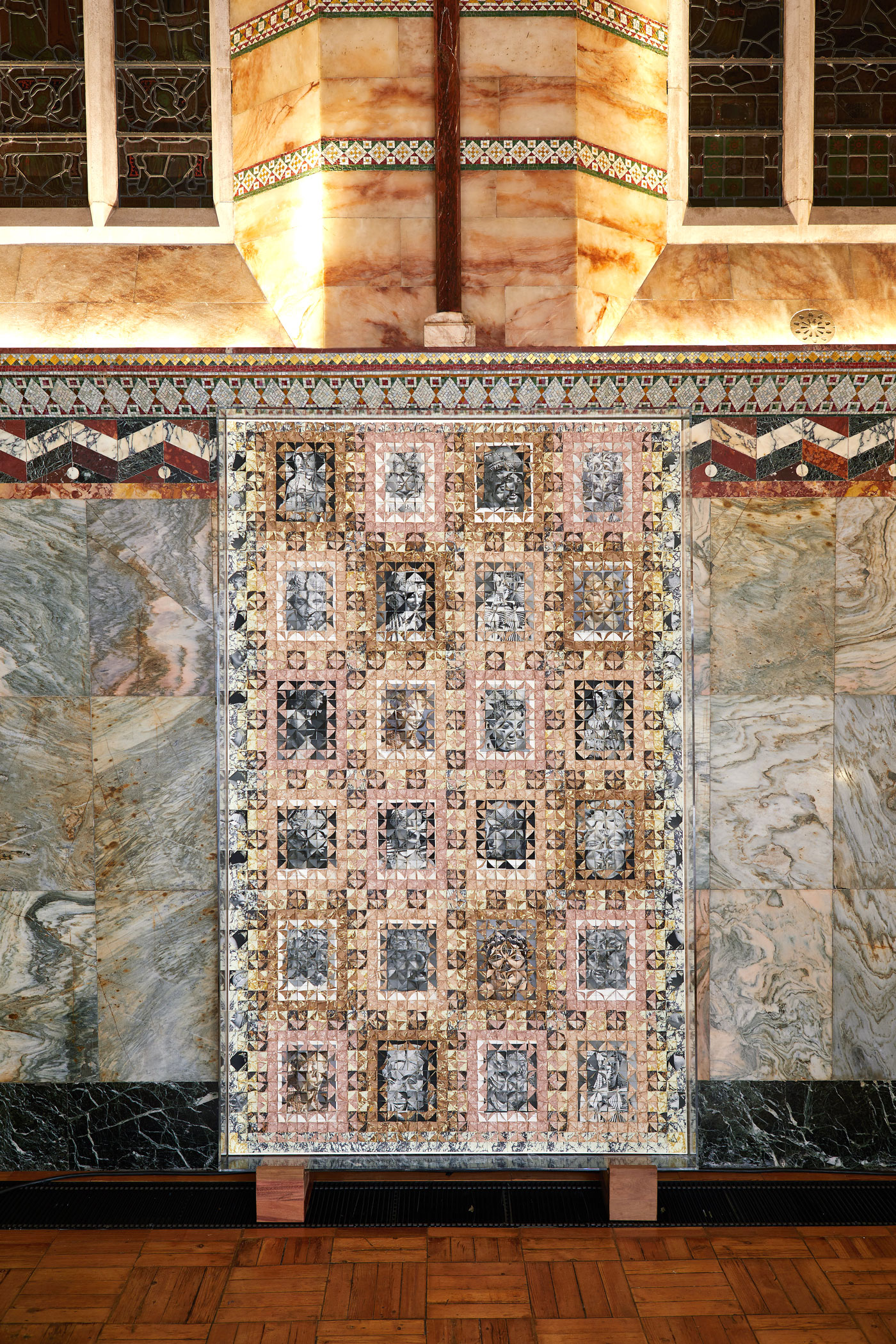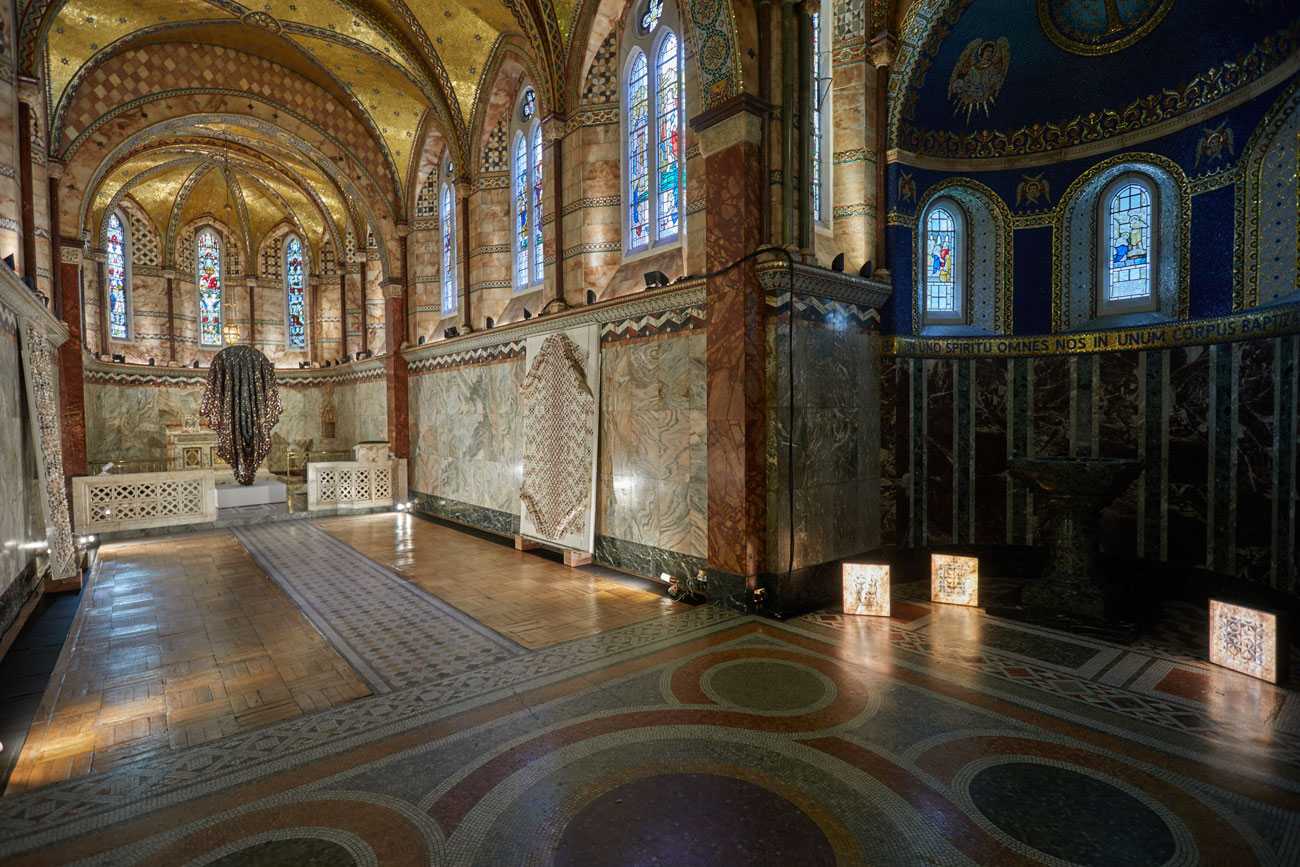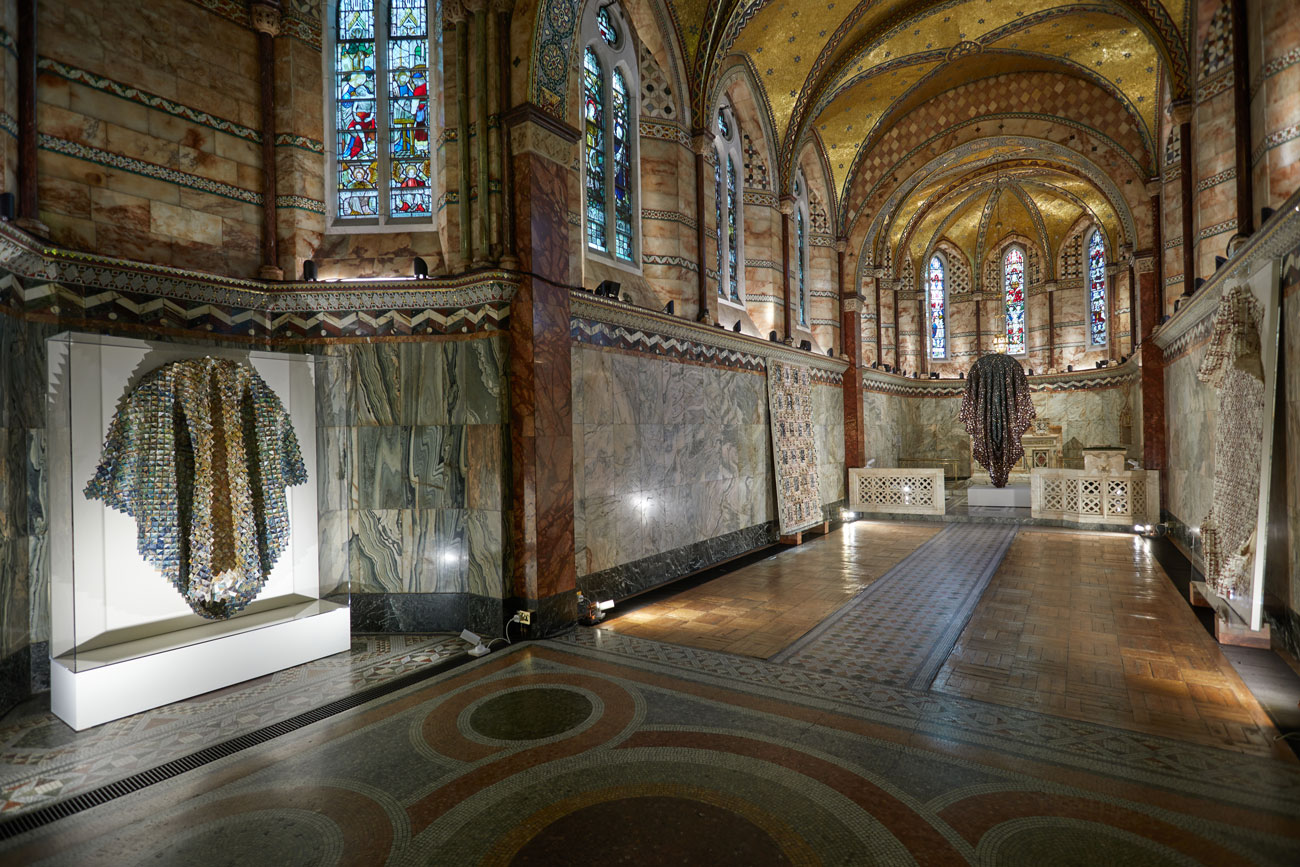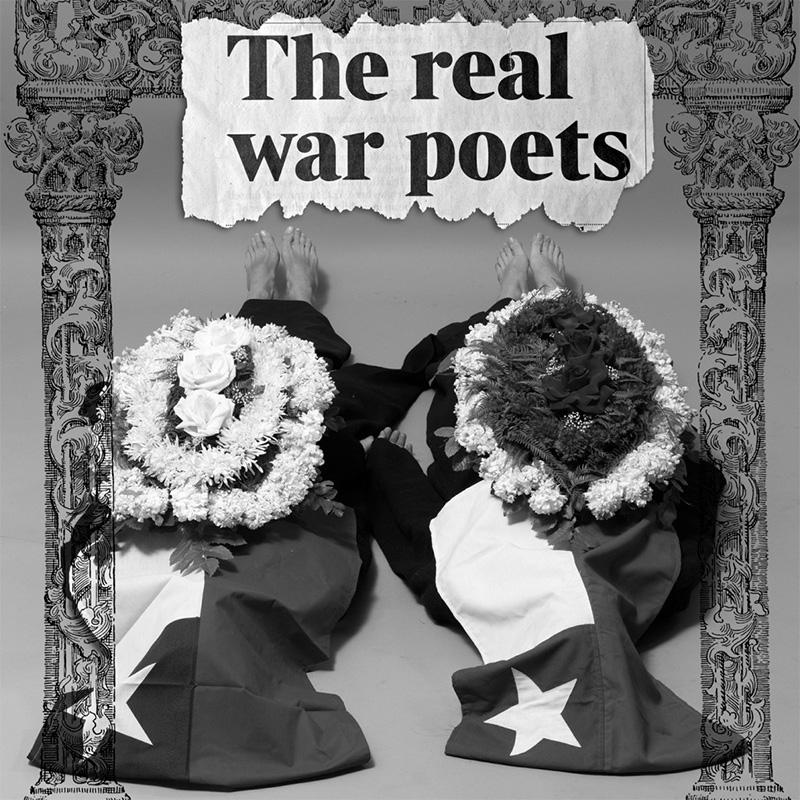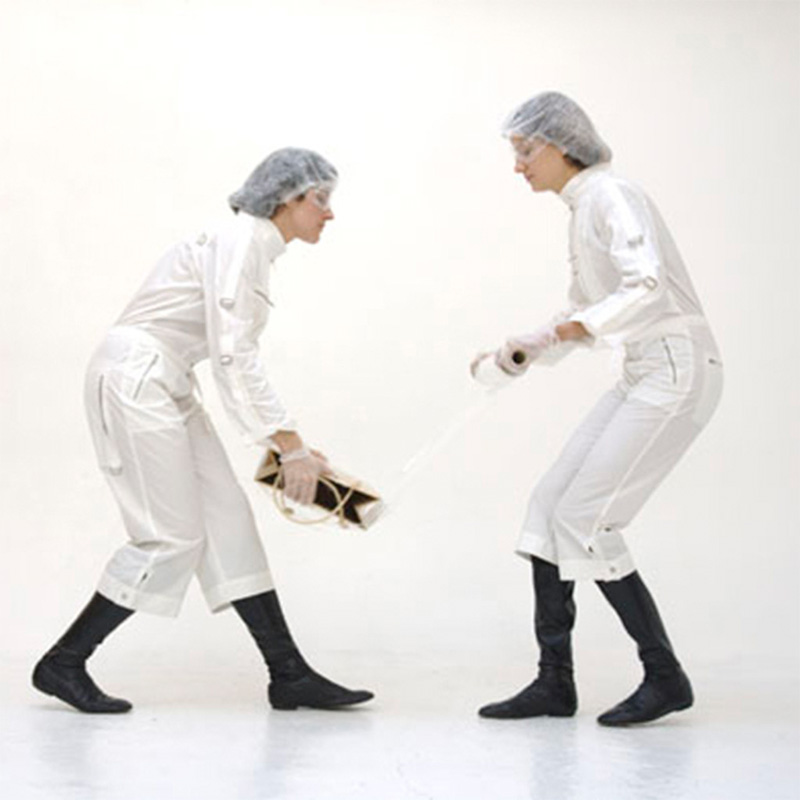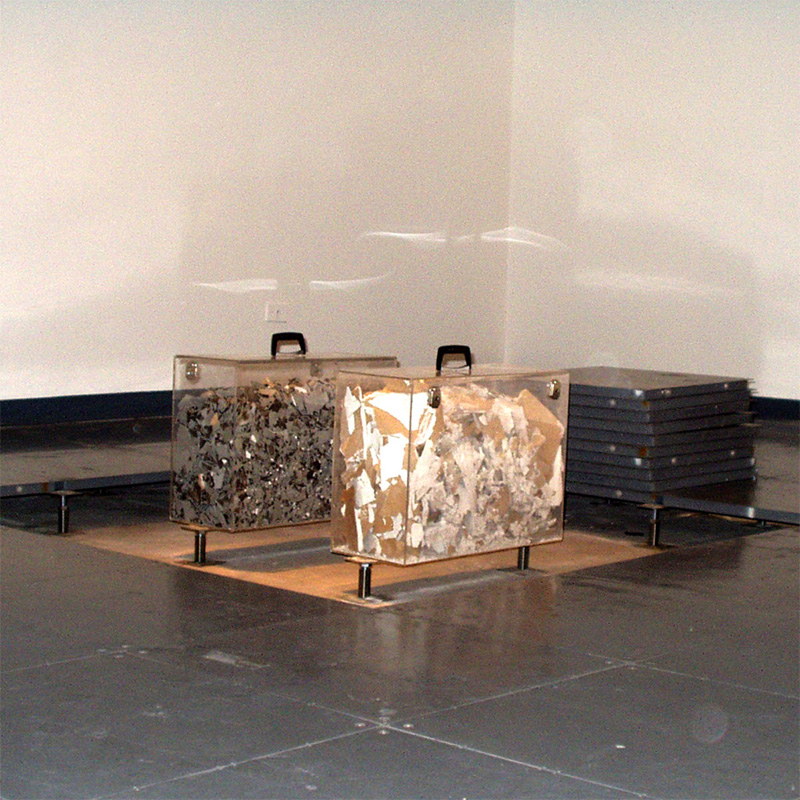The woven artworks of Catalina Swinburn seek to revalidate the place of women throughout history. In recognition of the way narratives were woven as a substitute for the silence of women across time, Swinburn uses this historical practice as a metaphor for resistance. “Weaving is a symbol of female expression, a substitution of a woman’s voice, weaving can portray what words cannot say.”
Swinburn’s show “Revolutionary Myths”, seeks to reimagine narratives of women by remembering primordial female figures which have shaped cultures and belief systems from ancient to contemporary times across the world. Swinburn has woven stories of legendary and historical women selected from foundational feminist literature into tapestries, presenting them as the fabric of a global heritage.
Taking place at Fitzrovia Chapel, Swinburn skillfully interweaves references between the chapel’s Byzantine architecture and its contemporary medieval work ‘The Book of the City of Ladies’ by Christine de Pizan, as she embellishes the chapel with woven investitures, which rise like the allegorical buildings of Pizan’s kingdom. The representation of these myths, through the interdisciplinary use of weaving, text and sound, instills a divine female presence into the worship space, historically void of feminine energy, in appreciation of the vital feminine contributions to human civilisation across political, spiritual and practical spheres.


